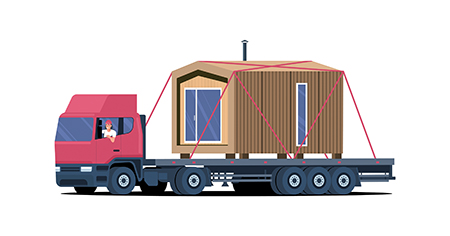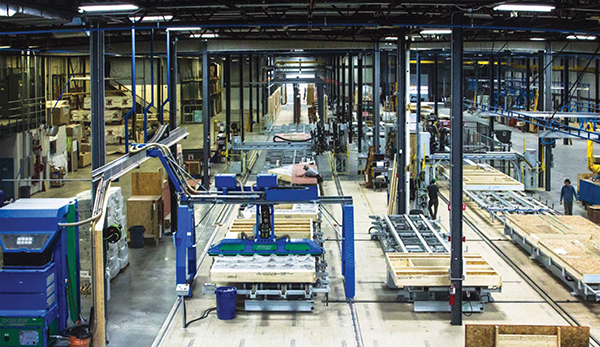A roadmap for comprehensive continuous improvement in offsite construction
I preach a lot in this column about how to optimize the factory process using Lean principles. But it doesn’t stop there. As industry leaders and pathfinders, we must recognize that the journey of continuous improvement needs to transcend the boundaries of our factory floors.
In this month’s article, I dive into how we can extend this philosophy across the entire value chain. Doing so will revolutionize our industry, from design to delivery.
Lean Principles in Design
Design is the genesis of every construction project. Applying Lean principles at this stage is about envisioning a design that is not only aesthetically pleasing, but also optimized for efficiency.
We need to ask some questions. For instance, how can designs be standardized without stifling creativity? And, how can modularity be incorporated to streamline the manufacturing process? The answers to these questions require us to embrace collaborative design tools like Building Information Modeling (BIM), which allows for real-time, multi-disciplinary collaboration, the reduction of rework and improved accuracy.
The concept of ‘design for manufacturing & assembly’ (DfMA) also takes center stage here. By considering manufacturing capabilities and constraints during the design phase, we can significantly reduce wasted resources and production time. This will also enhance the quality of the final product, ensuring that what is designed is both buildable and sustainable.

Collaborative Project Planning
The planning stage is ripe for the application of Lean. Collaboration is not just a buzzword here; it’s a strategic tool. During the planning process, integrating everyone involved in the project – architects, engineers, contractors, suppliers and customers – fosters a shared understanding of the project goals and the roadmap needed to achieve them. Tools like collaborative project management software can facilitate this integration, allowing for transparent, real-time communication and decision-making.
Effective project planning also includes aligning the project’s objectives with customer needs. Applying the ‘Jobs-To-Be-Done’ framework here can be transformative. By understanding the job for which customers “hire” a construction project, we can tailor our planning to meet those specific needs and expectations, thereby enhancing customer satisfaction and value delivery.

Logistics Optimization
In offsite construction, logistics is a complex puzzle involving multiple moving pieces. The goal is to ensure that components arrive ‘just in time’ and in perfect sequence to minimize on-site storage and handling. This requires meticulous planning and coordination with suppliers, often leveraging technologies such as GPS tracking and advanced logistics software.
The optimization of logistics also includes the analysis of transportation routes. This analysis is about looking for ways to make transportation more efficient, and will consider factors like fuel consumption, delivery times and environmental impact. Optimization can also include consolidating shipments and coordinating deliveries to reduce transportation costs and energy use, both of which support economic and environmental sustainability objectives.

Customer Feedback Loops
In the Lean approach, the voice of the customer is paramount. It’s vital to establish robust feedback loops where customer insights are continuously gathered, analyzed and acted upon. This can be done through post-occupancy evaluations, customer surveys and direct communications.
These feedback loops should not only focus on the end product, but should also include the entire customer journey – from initial inquiry to after-sales support. Analyzing this feedback helps identify areas for improvement, enhance customer satisfaction, and refine the product and process for future projects.
Post-Construction Evaluation
Every completed project is a treasure trove of lessons. Conducting thorough post-construction evaluations or “post mortems,” including debriefs with project teams and stakeholders, allows us to glean insights into what worked well and what didn’t. This reflection is crucial for continuous improvement.
Key performance indicators (KPIs) like project duration, manufacturing productivity, budget and schedule adherence, and customer satisfaction levels should be analyzed. Learning from these metrics enables us to set more accurate benchmarks for future projects and to continually refine our processes.
Integrated Information Systems
In the era of digital transformation, the integration of information systems across the value chain is a game changer. Software systems like BIM, ERP (Enterprise Resource Planning) and CRM (Customer Relationship Management) create a digital thread that weaves through every stage of the construction process.
BIM provides a multi-dimensional model that aids in design, construction and facility management. ERP systems streamline internal processes, from procurement to finance. CRM systems help in managing customer relationships, ensuring that we are consistently aligned with customer needs and expectations. The integration of these systems facilitates seamless information flow, better decision-making, and ensures that everyone involved in the project is on the same page.

Conclusion
Our journey through the application of continuous improvement principles across the offsite construction value chain reveals a landscape rich with opportunities for innovation and efficiency. From the initial design stages to post-construction evaluations, each phase presents unique challenges and the potential for optimization.
By embracing Lean principles in design, fostering collaborative project planning, optimizing logistics, establishing continuous customer feedback loops, conducting insightful post-construction evaluations and integrating advanced information systems, we can collectively elevate the offsite construction industry to new heights.
This holistic approach to continuous improvement is not just about streamlining processes and reducing waste; it’s about redefining the value we deliver to our customers and stakeholders. It’s about building a legacy of efficiency, quality and innovation in one of the world’s most vital industries. Let’s continue to push the boundaries and lead the way in transforming offsite construction into a beacon of modern, efficient and customer-focused manufacturing.
Daniel Small is a Denver, Colorado-based management consultant to the offsite construction industry. He specializes in Lean Construction and Manufacturing and Six Sigma methodologies. For assistance with improving your offsite manufacturing process, contact him at 719-321-1953 or [email protected]. Or visit www.LeanOffsite.com.







